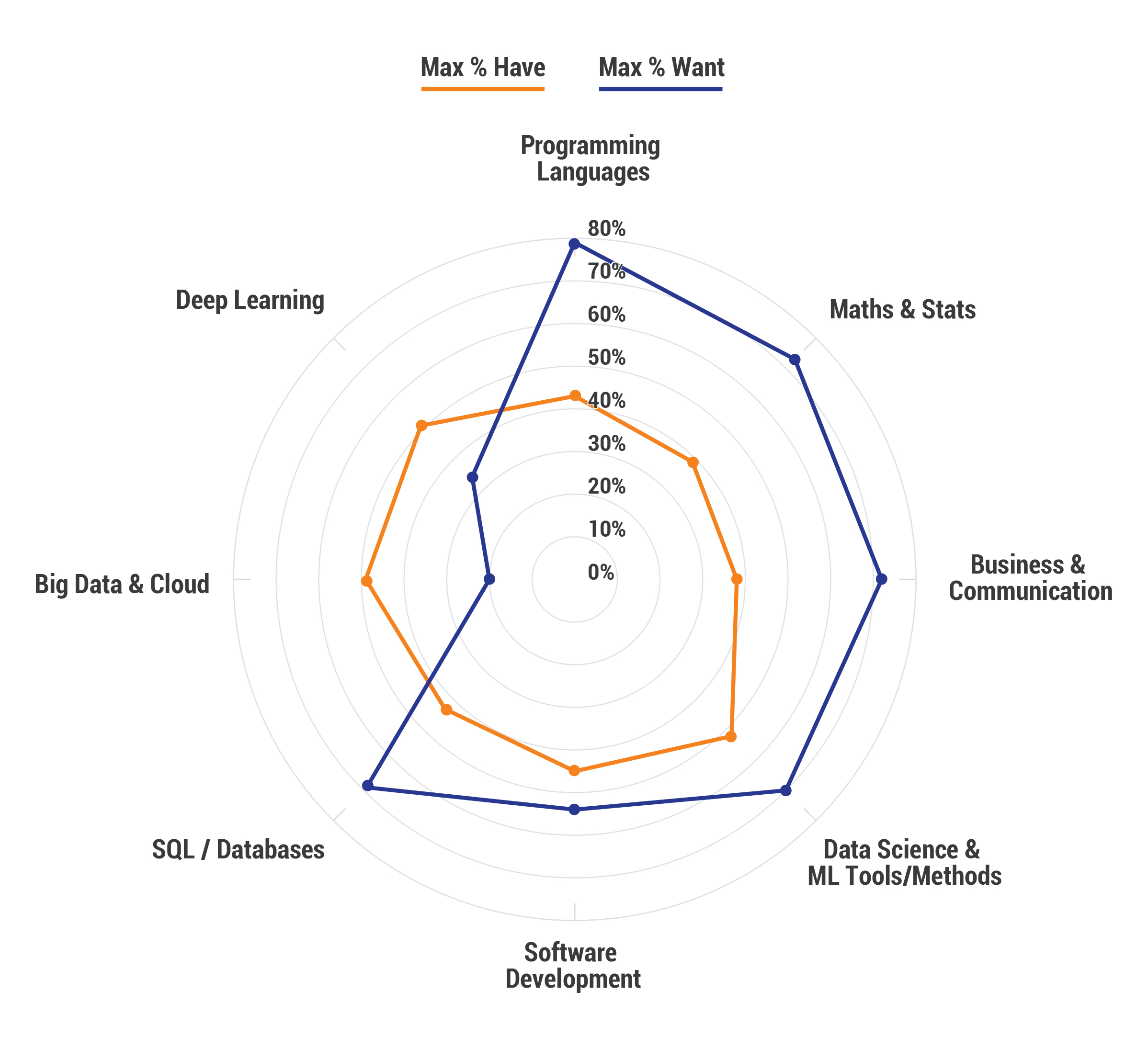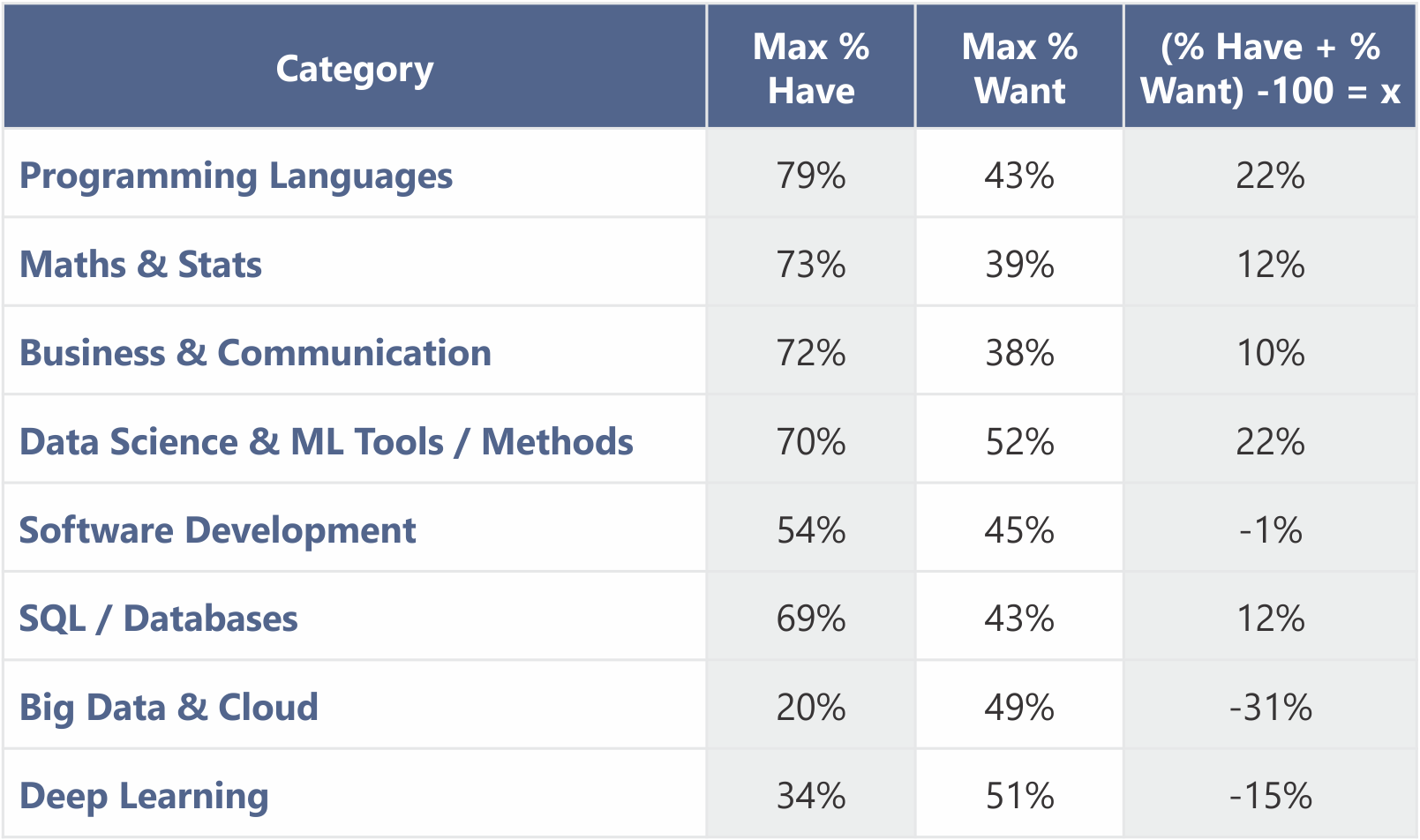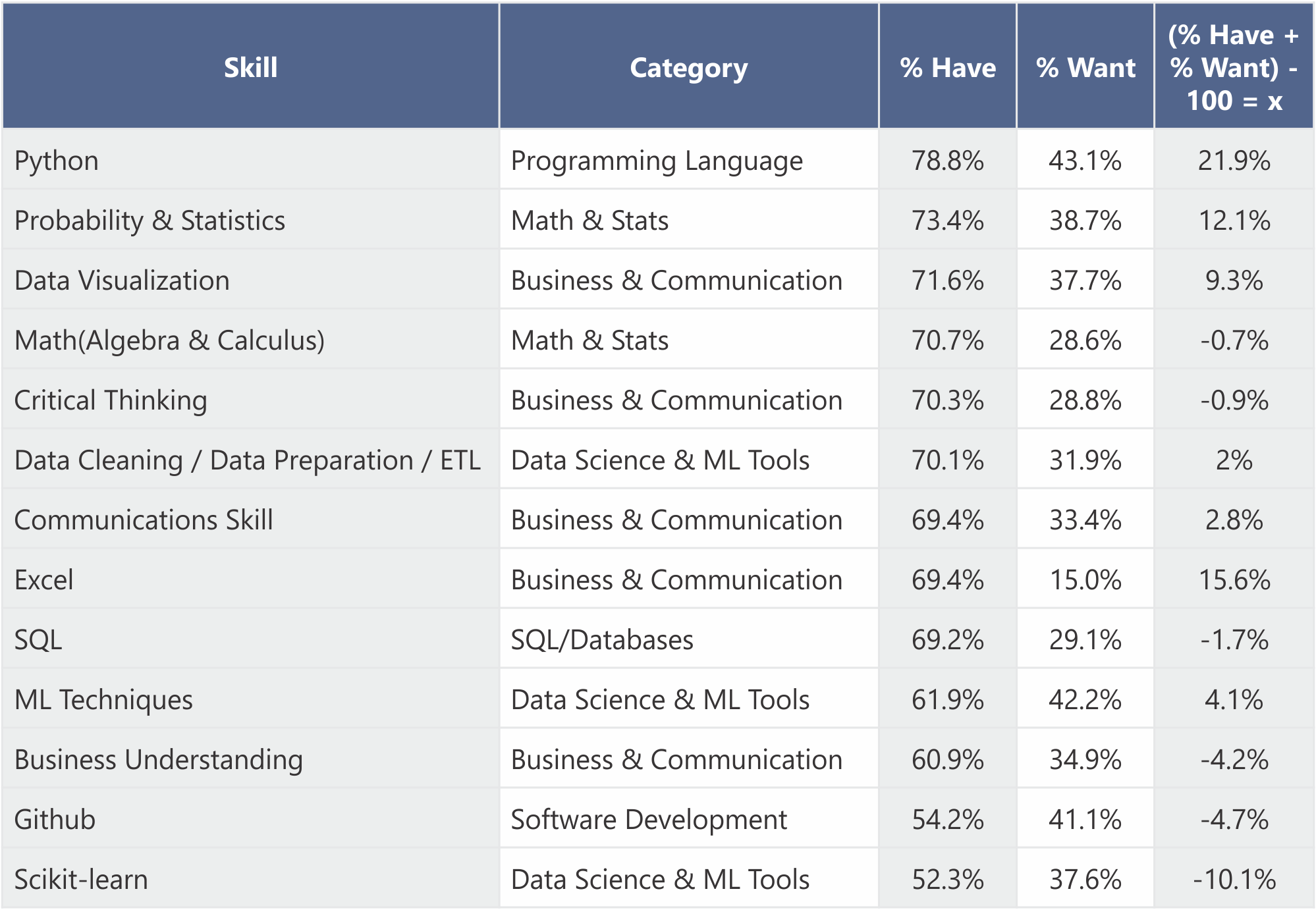
Summary:
Data scientists and related professionals seek modern skills to compete in the current job market with knowledge, certification, and experience. Information boom is ON and has absorbed many data science professionals in this walk of equipping self with the best orientation and success in understanding details to develop solutions at various levels of difficulties (in various sectors).
Almost 50 items of data science skills/knowledge areas have been divided into eight categories. They are programming languages, Mathematics and Statistics, Business and Communication, Data science/ML tools/Methods, Software Development, SQL/Databases, Big Data/Cloud, and Deep Learning. In the article below, there is a talk on the skills already acquired and skills the candidates aim to develop.
The recent KDnuggets Poll was performed again as a follow-up on Data Science Skills, and the respondents were asked two questions:
- Which knowledge areas or skills do you currently exercise at work or research? (% Have)
- Which skills do you want to improve or add on? (% Want)
The poll got nearly 1000 responses. The results are analyzed to understand how the data science career is rising above the horizon in the current period of ambition leading to learning and practicing.
Let us delve deeper.
Important data scientist skills which should be acquired for efficiency reach
- Programming Languages: R, Python, Java, C++, SAS, MATLAB, Julia, Scala,
- Math and Statistics: Probability and Statistics, Algebra and Calculus, Epidemiology, Survival Analysis
- Software Development: Software Engineering, GitHub, DevOps, Kubernetes, Docker
- Business and Communication: Critical Thinking, Business Understanding, Excel, Communications Skills, Tableau, Data Visualization, PowerBI
- Databases / SQL: Database / SQL Coding, Graph Databases, No-SQL Databases
- ML Tools / Data Science /Methods: Prep / Data Cleaning, Scikit-learn, ML Algorithms, Text Processing, Unstructured Data, XGBoost, Reinforcement Learning, Kaggle
- Deep Learning: Keras, Deep Learning algorithms, TensorFlow, NLP, PyTorch, Computer Vision, Other types of DL frameworks
- Cloud / Big Data: Apache Spark, AWS, Microsoft Azure, Dask, Hadoop, Google Cloud, other types of Cloud Computing Platforms, other types of Big Data Tools
A diagram can speak 1000 words in every language. The below given diagram speaks about Max % Have and Max % Want with respect to major categories of skills essential for data scientists’ career progress.

Figure 1: The % Have and % Want in the diagrammatic form
The Tables Tailoring Facts and FiguresIt can be seen that there is an overlapping of those with % Have on % Want. Thus, % Have doesn’t stop the learning cycle but sometimes boasts it to more course and certification taking.

Table 1: The % Have and % Want as per the major categories of data science skills
The above tabular demonstrates the major categories of skills and the % Have and % Want, along with the percentage of those data scientists and professionals who have but still want to learn skills for growth and career success.
% Want Vs. % Have by CategoryTable 2 shows the skills and the % Have and % Want along with the % of professionals who have skills but still want to improve. This shows the enthusiasm amongst the Data Science individuals to excel.

Table 2: Data Science Core Skills in Decreasing order of % Have
The Path to Learn, to Excel, to Move Up and AheadThere breathes in high ambition amongst data science professionals to learn, excel, and move up high on the same career ladder. Such a profound interest in growing self with educational achievements is rarely seen today where most people do not feel satisfied with their job responsibilities.
But this seems to be not the case with data science, where working and professional personnel is taking great interest in sharpening their skills despite having prior qualification and job. It can be depicted from the % want to do a course in data science is very high despite % having the prior knowledge and a job or research position.
Example in Agreement with above Values of the TheoryLet us take the example of programming languages with % Have as 79% and % Want as 43%.
It means that the percentage of data science professionals who have skills in it to work in a job or research system is 79%. The percentage of data science professionals who want to acquire skills is 43%. It points out that 22% of professionals, though have knowledge or skills in programming languages, still want to excel better and stand up more strongly in the job market.
Further Explanation
In addition to this, the 43% value (of % Want) shows the high ambition, which might be erupting out as enthusiasm from job satisfaction, interest in the field, and sincerity to the discipline. So much is achieved from a study discipline only when it also serves up with the required opportunities and matches the professionals' interest area at work or research. It then becomes the cause of learning along with earning in a full-time job or research.
It also shows that the ambitious crowd of data science professionals wants to achieve mastery, which they think is yet to be completed. Thus, they are not satisfied with their current research and job abilities and want to improve on and on. They might also be realizing the need to study ahead can become the cause of their promotion. Therefore, even they are dedicated to the data science discipline of work, study, and research. Thus, the psychology of the personnel in the field reflected in this study shows a very positive mindset towards data science.
Conclusion
The addition of a new skill from the above list could increase the job prospects or improve the salary package.
If an individual has more than one skill in the list provided, then getting accepted for the job can increase.
Acquiring data science skills even step by step holds the future of a promising career. To achieve this, getting certified helps stand as an individual in a crowd.


































